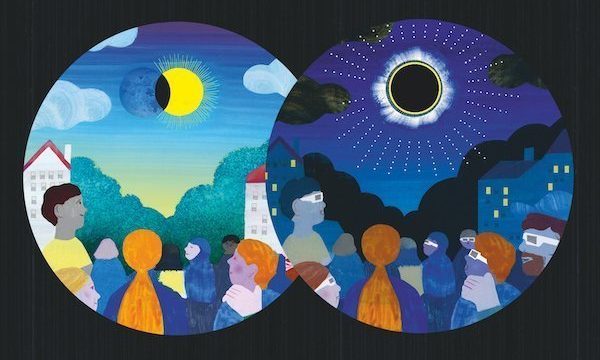2019 is the 50th anniversary year of NASA’s Apollo 11 mission to the moon during which American astronaut Neil Armstrong declared his first step on the lunar surface as, “That’s one small step for man, one giant leap for mankind.” The moon has always held a firm fascination for us down here on Earth but where did it come from and what really causes an eclipse?
Where Did The Moon Come From?
 Scientists used to believe that once, a very long time ago, the moon passed by the Earth and became trapped by its gravity. But a discovery in the 1970s made them question this idea. Samples of soil brought back from the moon by the Apollo astronauts turned out to be very similar to rocks on Earth. Then scientists suggested a new idea. Four and a half billion years ago, a wandering planet the size of Mars smashed into the Earth. The crash threw lots of huge rock fragments out into space which eventually joined together to become the moon. In 2017 a new theory was put forward that the moon was formed by many small crashes with many mini-planets. The riddle is slowly being solved, however where exactly the moon came from is still a mystery.
Scientists used to believe that once, a very long time ago, the moon passed by the Earth and became trapped by its gravity. But a discovery in the 1970s made them question this idea. Samples of soil brought back from the moon by the Apollo astronauts turned out to be very similar to rocks on Earth. Then scientists suggested a new idea. Four and a half billion years ago, a wandering planet the size of Mars smashed into the Earth. The crash threw lots of huge rock fragments out into space which eventually joined together to become the moon. In 2017 a new theory was put forward that the moon was formed by many small crashes with many mini-planets. The riddle is slowly being solved, however where exactly the moon came from is still a mystery.
The Moon’s Changing Face
We will never be able to see the far side of the moon from Earth however in 1959, a Russian satellite called Luna 3 was able to finally take photographs of it. Since the moon is constantly moving around the Earth, we can’t always see the whole side that is lit by the sun. Instead we only see part of it and its shape seems to change from one night to the next. These changes are called the phases of the moon.
When The Sun Disappears
When the moon comes between the Earth and the sun, it blocks the sun’s light and the sky grows dark, even in the middle of the day. However only a small part of the Earth is plunged into the shadow of the moon. The people who live there see an eclipse of the sun. But the darkness only lasts for a few minutes and does not happen very often. It will then be many years before another solar eclipse happens in the same place.
 Exploring Space
Exploring Space
In the 1960s, Russia and the USA both wanted to become the first country to set foot on the moon. Their contest was called the Space Race. Propelled by the Saturn V rocket, the USA’s Apollo 11 module landed on the moon on 20 July 1969 after a three-day journey. Neil Armstrong and Edwin ‘Buzz’ Aldrin became the first men to walk on the moon on July 21. The Apollo 11 crew stayed on the moon for two and half hours, jumping around in the low gravity and carrying out experiments. In all, there were six Apollo moon landings between 1969 and 1972.
On January 3, 2019 a Chinese spacecraft, the robotic probe Chang’e 4, became the first ever to land on the far side of the moon.

An edited excerpt from Pop-Up Moon with text by Anne Jankeliowitch, paper engineering by Olivier Charbonnel and illustrations by Annabelle Buxton. Pop-Up Moon is published by Thames & Hudson, HB £19.95.

